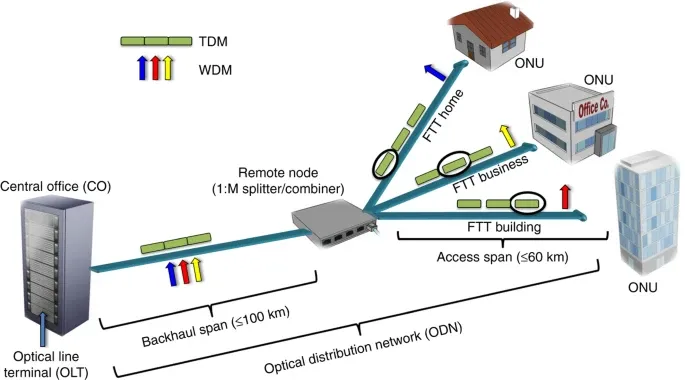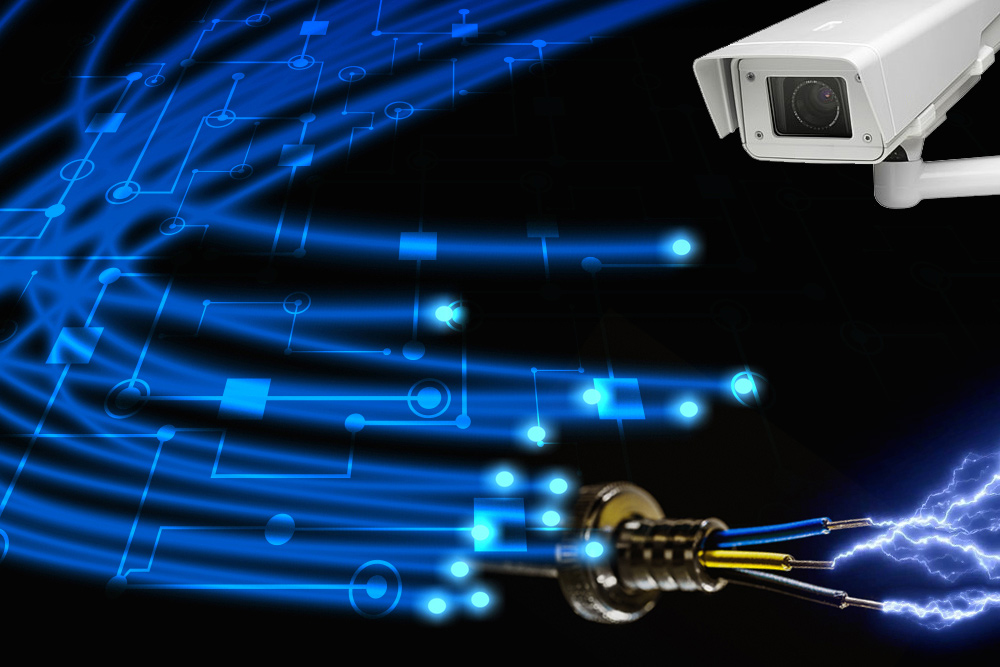Reasons to Pick a Fiber Optic Security System for Maximum Protection and Efficiency
Enhance Your Safety With Advanced Fiber Optic Security Solutions
In a period where safety is paramount, innovative fiber optic protection systems offer an engaging solution for improving safety and security across numerous environments. What ramifications do these improvements hold for future protection steps?
Benefits of Fiber Optic Safety And Security
Harnessing the benefits of fiber optic technology dramatically boosts safety systems throughout different applications. Among the main benefits is the increased data transfer capability, allowing for the transmission of large amounts of information at high rates. This is especially essential for real-time video security, where high-resolution feeds can be sent out without latency, guaranteeing prompt action abilities.
In addition, fiber optics exhibit premium resistance to electromagnetic disturbance, which is important in atmospheres with possible signal disruptions. This dependability makes certain constant efficiency in vital security operations. Additionally, fiber optic wires are less susceptible to tapping and unapproved access compared to standard copper electrical wiring, consequently boosting information honesty and discretion.
One more noteworthy advantage is the toughness of fiber optic systems; they are extra immune to ecological aspects such as wetness, temperature level changes, and harsh compounds. This resilience equates to lower maintenance costs and longer lifespans for safety installations.
Last but not least, the lightweight nature of fiber optic wires facilitates easier installment and routing, specifically in complicated infrastructures (fiber optic security system). Eventually, the combination of fiber optic technology right into security systems not only strengthens security measures but likewise enhances functional efficiency
Key Functions to Think About
When examining fiber optic security systems, a number of crucial attributes should be taken into consideration to ensure ideal efficiency and performance. Initially, assess the system's detection range and level of sensitivity; a substantial array permits checking large locations, while high level of sensitivity ensures that even small disruptions are detected quickly.
Following, take into consideration the combination capabilities of the system. A fiber optic security system should flawlessly interface with existing safety and security actions such as cams and alarm systems, producing a cohesive safety network.
Longevity and ecological resistance are also important functions. Make sure that the system is designed to stand up to extreme weather condition problems and prospective physical risks, as this will extend its functional life expectancy.

Lastly, check out the scalability of the system. A durable fiber optic security system must be easily expanding to suit future needs without substantial overhauls. By very carefully considering these functions, you can select a fiber optic protection option that improves safety and protection in your environment.
Installation Refine Overview
To efficiently apply a fiber optic safety system, a systematic installation process is necessary. This process starts with a thorough site evaluation to identify the particular protection needs and to recognize optimum locations for fiber optic cable televisions and security tools. Following this assessment, the setup group will certainly create a comprehensive plan, including cord paths, needed devices, and conformity with neighborhood policies.
Following, the installation involves laying the fiber optic cords, ensuring they are secured from ecological elements and physical damage. Proper handling methods are vital, as fiber optic cable televisions are sensitive and can be quickly harmed. After the cabling is set up, adapters and discontinuations are diligently finished to make certain signal honesty.
The subsequent stage includes installing security tools such as cameras, movement detectors, and alarm systems, all incorporated with the fiber optic network. Strenuous testing is performed to confirm that all components are working correctly and to ensure optimum performance.

Contrasting Fiber Optic to Typical Solutions
The advancement of security modern technology has brought about considerable advancements in the contrast in between fiber optic systems and standard copper-based systems. Fiber optic systems use light to transmit data, supplying exceptional transmission capacity and speed compared to their copper counterparts. This causes enhanced information transmission capacities, making optical fiber optimal for high-resolution check over here video monitoring and real-time surveillance.
Additionally, fiber optic cords are immune to electro-magnetic interference, lowering the possibility of signal deterioration caused by outside aspects. This particular ensures constant efficiency, even in challenging atmospheres. On the other hand, standard copper systems are a lot more at risk to interference, resulting in prospective susceptabilities in security applications.
Sturdiness is an additional advantage of fiber optic systems. They are much less susceptible to harm from environmental aspects such as dampness and temperature variations, which can compromise copper wiring. Fiber optics are lighter and thinner, permitting for less complicated installment and minimized physical impact.
Nevertheless, traditional systems often tend to have lower initial costs, making them appealing for budget-conscious projects. While fiber optic systems may require a higher in advance investment, their lasting advantages-- such as lower upkeep prices and higher dependability-- commonly outweigh the preliminary expenditure, placing them as a superior option for contemporary security requirements.
Future Patterns in Safety Innovation
Arising patterns in protection modern technology are positioned to transform the landscape of monitoring and danger detection - fiber optic security system. As companies significantly deal with innovative risks, advancements such as expert system linked here (AI) and equipment knowing (ML) are coming to be indispensable to safety systems. These technologies improve the capacity of fiber optic systems by allowing real-time data evaluation, determining anomalies, and automating feedbacks to possible violations
In addition, the assimilation of the Internet of Points (IoT) is reinventing safety and security frameworks. IoT devices can give extensive situational awareness and help with seamless interaction in between different protection elements. This interconnectedness allows for a lot more efficient surveillance and faster occurrence reaction times.
Biometric verification is likewise gaining energy, providing a greater degree of protection through unique physical attributes. As this innovation advances, it is likely to be integrated right into fiber optic systems for boosted gain access you could try this out to control.
Conclusion
In final thought, progressed fiber optic safety systems stand for a significant advancement in safety and security and surveillance modern technology. Their remarkable bandwidth, resistance to disturbance, and resilience facilitate reputable tracking and information integrity. As these systems integrate AI and IoT abilities, they enhance the overall safety framework, making sure durable defense for properties. The transition from typical systems to fiber optic remedies shows an expanding pattern towards a lot more reliable and reliable protection actions in a significantly complicated technological landscape.